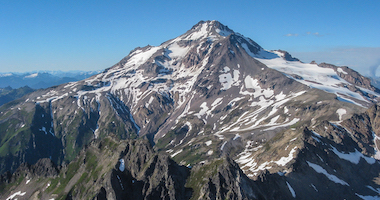RMI Expeditions Blog

On The Map
Good luck on an amazing summit!!!
Posted by: Ally on 7/14/2019 at 3:31 pm
I don’t recognize what country you’re all in. But, best wishes to y’all for a safe summit and descent. Step safe!
Posted by: Susan Moore on 7/14/2019 at 12:51 pm
Posted by: JM Gorum
Categories: Expedition Dispatches Elbrus Southside

Gorem,
You’ve had a successful summer of summits. Keep it up for Tyler and the others. Best wishes, and step safe!
Posted by: Susan Moore on 7/14/2019 at 12:47 pm
Hoping and praying conditions improve! Love you Tyler
Posted by: donna shearburn on 7/14/2019 at 6:26 am
Posted by: Tyler Jones, Ben Ammon
Categories: Expedition Dispatches Mount Rainier
Elevation: 14,410'

Nice, good job.
Cant wait to see how far my body and the mountain lets me go.
Posted by: Loco Raindrops on 7/14/2019 at 8:52 am
Hi Kim! Amazing climbing all you guys! Wishing you still another 2 great and safe climbs. Enjoy the incredible, beautiful vistas. xxx Trish
Posted by: Trish on 7/13/2019 at 10:57 am
We are all so thrilled at the team’s success and incredible experiences that you are having!
Miss you Dave!
XO
Laura
Posted by: Laura Bryson on 7/12/2019 at 5:25 pm

On The Map
Posted by: Peter Whittaker, Mike Uchal
Categories: Expedition Dispatches Mount Rainier
Elevation: 14,410'
great great fun hugs!!!you are the best1ever!!!!!!!!!!!!!!!!!!!!!!!!!!!!!!!!-GRACE
Nice work, Hun! We love you! Have a safe drive home. Call when you can. -Cory
Posted by: Cory Hatch and Grace Hatch on 7/12/2019 at 3:51 pm
Woo Hoo!!! Way to go, all, and big hugs to Amy.
Posted by: Nancy on 7/12/2019 at 1:59 pm
Posted by: Elias de Andres Martos, JT Schmitt
Categories: Expedition Dispatches Huascaran
Elevation: 12,800'
Sounds like everything is going great. Nice job! Love following the blog!
JT, did you get a hold of Brad?
Posted by: Ellen Smith Eaton on 7/11/2019 at 3:34 pm


Good luck, Bill! We’re rooting for you!
Posted by: Ann Gawalt and Brian Rushforth on 7/12/2019 at 3:24 pm
Good luck Bill and Chris!
Posted by: Thomas J Lapato on 7/12/2019 at 4:37 am

On The Map
Love the pictures and updates. Looks like you’re getting all 4 seasons on one trip. Can’t wait to hear about your Friday hike - hoping for clear weather and great views!
Posted by: Kim Beatrice on 7/12/2019 at 8:04 am
We’re suffering through weather with temperatures in the 80’s while you’re up there!! Safe climbing and hoping for less wind.
Posted by: Carolyn Rossi on 7/11/2019 at 5:15 pm






































so proud of you mom!!! I love you!
Posted by: Prudy on 7/19/2019 at 2:26 pm
Wow!! Well done everybody! Wendy, we are proud of you :)
Posted by: Carlos Alcaide on 7/15/2019 at 4:48 am
View All Comments